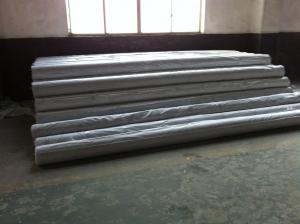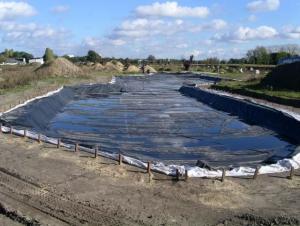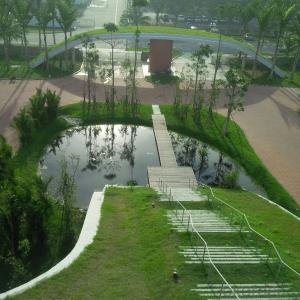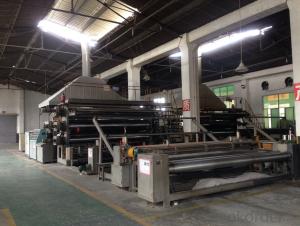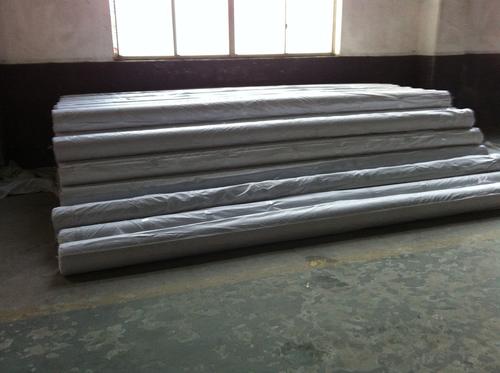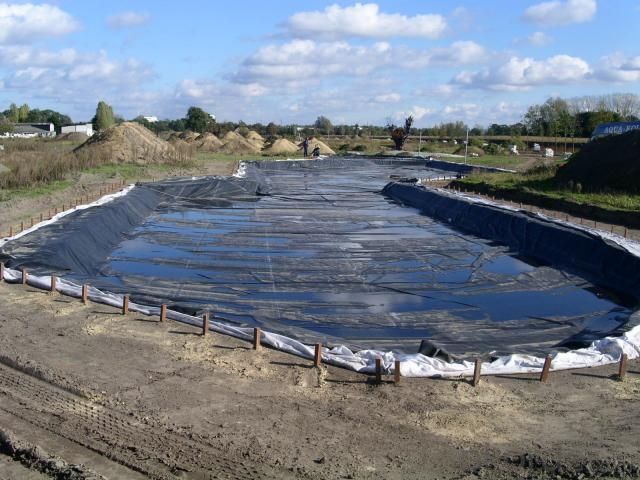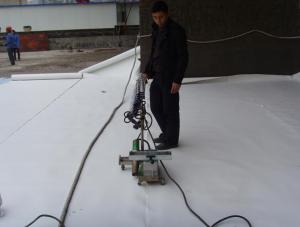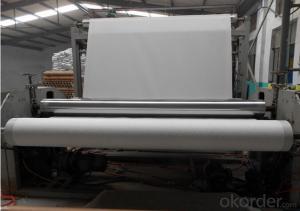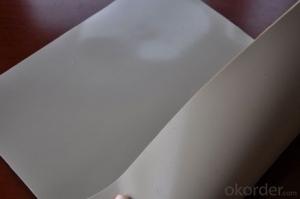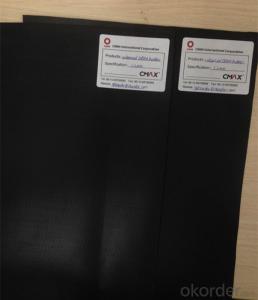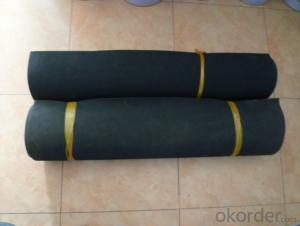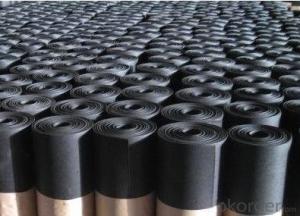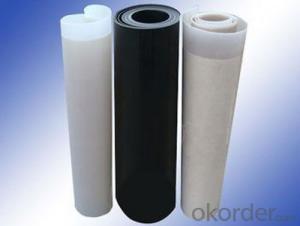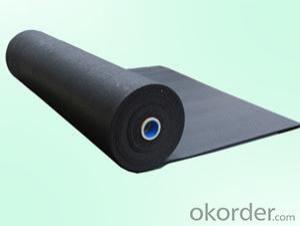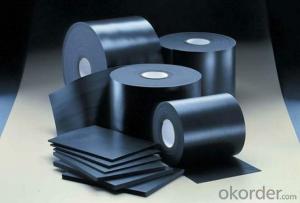Wide EPDM rubber waterproof membrane 2015 HOT
- Loading Port:
- Qingdao
- Payment Terms:
- TT OR LC
- Min Order Qty:
- 1000 m²
- Supply Capability:
- 1000000 m²/month
OKorder Service Pledge
OKorder Financial Service
You Might Also Like
1. Introduction
| EPDM waterproof membrane is made from ternary ethylene-propylene
rubber, which is for waterproofing of exposed and non-exposed applications.
| EPDM waterproof membrane production adopts the world-advanced equipment of
cold feeding extrusion and continuous vulcanization technology.
| EPDM waterproof membrane is of high elasticity among high polymer waterproof materials
and becomes a world-popular waterproofing material.
2. Specification
1) Material: EPDM Rubber
2) Size: 1.2m/2m/3m/4m (width)*20m (length) or customized,
3) Thick: 1.2mm, 1.5mm, 2.0mm
4) Type: Weldable
5) Pattern: Non-reinforced (homogeneous)
6) Certificate: ISO9001/14001
3. Features
| Excellent physical and mechanical performance
| High tearing resistance
| Good deformation adaptability
| High puncture resistance
| High aging resistance
- Q: Does a waterproofing membrane provide any insulating properties?
- A waterproofing membrane does not offer any insulation. Its main purpose is to stop water or moisture from entering a building or roof. It acts as a protective barrier, preventing damage to the underlying materials. Insulation, on the other hand, is specifically designed to minimize the transfer of heat, sound, or electricity. While both waterproofing and insulation are crucial for maintaining a structure's integrity and functionality, they serve distinct purposes and should not be mistaken for each other.
- Q: Can a waterproofing membrane be used for a hotel?
- Yes, a waterproofing membrane can be used for a hotel. Waterproofing membranes are commonly used in construction to protect buildings from water damage. In the case of a hotel, a waterproofing membrane can be applied to various areas such as the roof, foundation, basements, bathrooms, and balconies to prevent water leakage and moisture penetration. This is especially important in areas where water exposure is likely, such as swimming pools, spa facilities, or areas with heavy rain or high humidity. Installing a waterproofing membrane in a hotel can help maintain the structural integrity of the building, prevent mold and mildew growth, and ensure a comfortable and safe environment for guests.
- Q: Are waterproofing membranes suitable for rooftop gardens?
- Rooftop gardens require proper waterproofing to prevent water leakage and structural damage. Waterproofing membranes, made of materials like rubber, PVC, or modified bitumen, create a barrier to stop water from entering the building. These membranes are highly resistant to water penetration. Without reliable waterproofing, excess water from irrigation or rainfall can damage the building, fostering mold growth and deterioration. Waterproofing membranes effectively seal the rooftop, preventing water infiltration and providing a long-lasting solution. Moreover, waterproofing membranes offer additional benefits. They protect against root penetration, safeguarding the roof structure. They also regulate building temperature by reducing heat absorption, enhancing energy efficiency. It's crucial to hire professionals with expertise in waterproofing systems for membrane selection and installation. They ensure proper installation, defect-free membranes, and integration with other roofing components. In conclusion, waterproofing membranes are suitable for rooftop gardens. They protect against water ingress, root penetration, and structural damage, allowing rooftop gardens to thrive while maintaining the building's integrity and longevity.
- Q: Can a waterproofing membrane be used on balconies or decks?
- Balconies or decks can indeed benefit from the use of a waterproofing membrane. These membranes are specifically designed to offer a shield against water and moisture, making them an ideal solution for outdoor spaces that are constantly exposed to the elements. Their composition typically includes rubber, PVC, or bitumen, and they are directly applied to the surface of the balcony or deck. By doing so, they effectively prevent water from penetrating the underlying structure, safeguarding it against potential damage caused by moisture. Waterproofing membranes prove particularly advantageous in areas prone to heavy rainfall, snow, or high humidity, as they effectively prolong the lifespan of the balcony or deck by preventing water-related issues such as rot, mold, or deterioration. Moreover, these membranes also serve as an additional layer of protection against harmful UV rays, effectively preventing discoloration or fading of the balcony or deck surface. Ultimately, opting for a waterproofing membrane for balconies or decks is a wise investment that ensures their durability while maintaining their aesthetic appeal.
- Q: Can a waterproofing membrane be used on concrete?
- Yes, a waterproofing membrane can be used on concrete. In fact, it is a commonly used method to prevent water penetration and protect concrete structures from moisture damage. A waterproofing membrane is a thin layer of material that is applied on the surface of the concrete to create a barrier against water and moisture. It can be made from various materials such as bitumen, rubberized asphalt, polyurethane, or acrylic. The membrane is typically applied in liquid or sheet form and adheres to the concrete surface to form a continuous and impermeable coating. This coating prevents water from seeping into the concrete, which can cause degradation, cracks, and other forms of damage. Waterproofing membranes are widely used in various concrete applications, including basements, foundations, roofs, and other structures that are exposed to moisture or water.
- Q: Can a waterproofing membrane be used for theme parks or amusement centers?
- Yes, a waterproofing membrane can be used for theme parks or amusement centers. These types of facilities often have water features, pools, or water rides that require effective waterproofing to prevent leaks or water damage. Waterproofing membranes provide a reliable and durable solution to keep these areas watertight, ensuring the safety and longevity of the park or center.
- Q: Can a waterproofing membrane be used on precast steel surfaces?
- Yes, a waterproofing membrane can be used on precast steel surfaces. The membrane is designed to provide a protective layer against water penetration, making it suitable for application on various surfaces, including precast steel. This can help prevent corrosion and prolong the lifespan of the steel structure.
- Q: Does a waterproofing membrane also protect against moisture and humidity?
- Yes, a waterproofing membrane also protects against moisture and humidity. The primary purpose of a waterproofing membrane is to create a barrier that prevents water from penetrating through surfaces such as walls, floors, or roofs. By effectively blocking water, it also helps to prevent moisture and humidity from seeping into the protected area. This is crucial in areas that are prone to water damage, such as basements, bathrooms, or outdoor structures. The membrane acts as a protective layer, ensuring that the interior remains dry and free from dampness caused by moisture or humidity.
- Q: How to use self-adhesive waterproofing membrane?
- 7) on the interface seal: the use of additional self-adhesive seal seal. When sealing the interface, first remove the diaphragm on the surface of the membrane overlap parts, and then paste the additional self-adhesive seal. If the overlap is contaminated, clean it first. (When the upper and lower layers between the use of lap, no self-adhesive seal, lap width of not less than 60mm) 8) Self-adhesive waterproofing membrane in the wall when the paving, the coil should be temporarily sealed at the mouth (available tape or thickened cement slurry seal), to prevent the wall of the head of the water too quickly lost. 9) node to strengthen the processing: node in the large surface after the completion of the construction of reinforced processing.
- Q: Can waterproofing membranes be applied over existing surfaces?
- Yes, waterproofing membranes can be applied over existing surfaces. These membranes are designed to adhere to a variety of materials such as concrete, wood, metal, and more. However, it is important to ensure that the existing surface is clean, free of any loose materials or contaminants, and properly prepared before applying the waterproofing membrane for optimal results.
Send your message to us
Wide EPDM rubber waterproof membrane 2015 HOT
- Loading Port:
- Qingdao
- Payment Terms:
- TT OR LC
- Min Order Qty:
- 1000 m²
- Supply Capability:
- 1000000 m²/month
OKorder Service Pledge
OKorder Financial Service
Similar products
Hot products
Hot Searches
Related keywords
